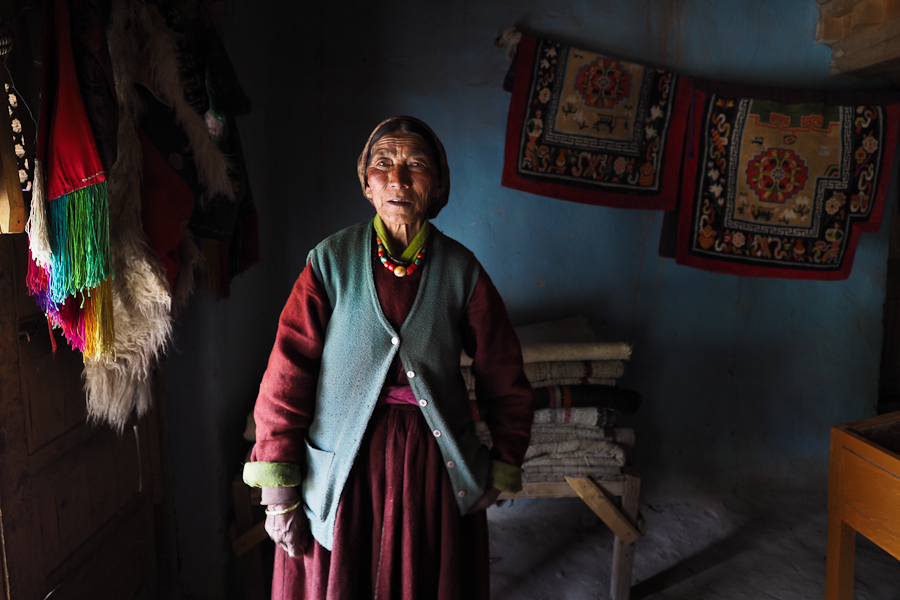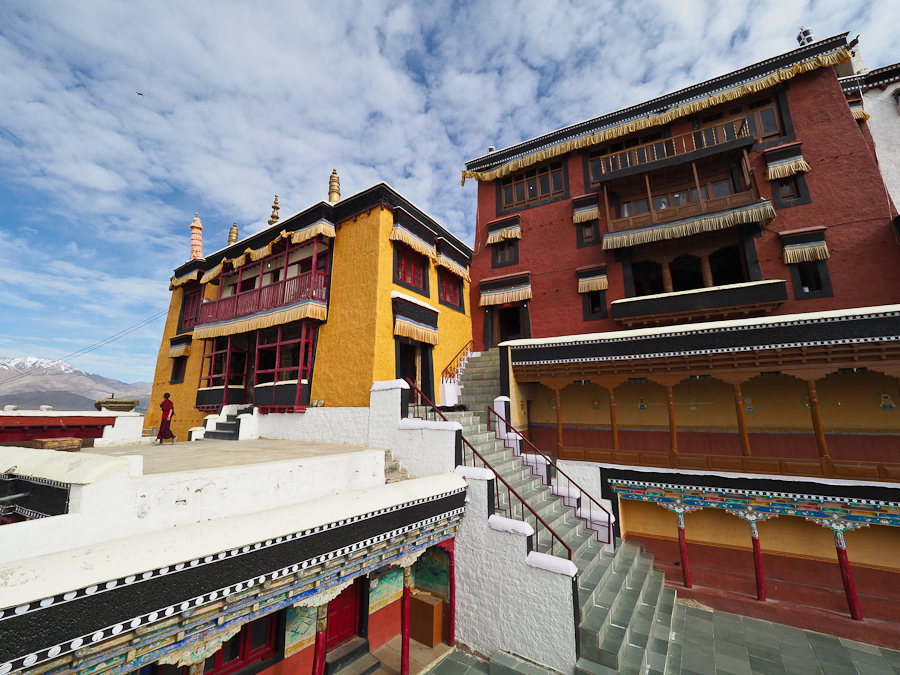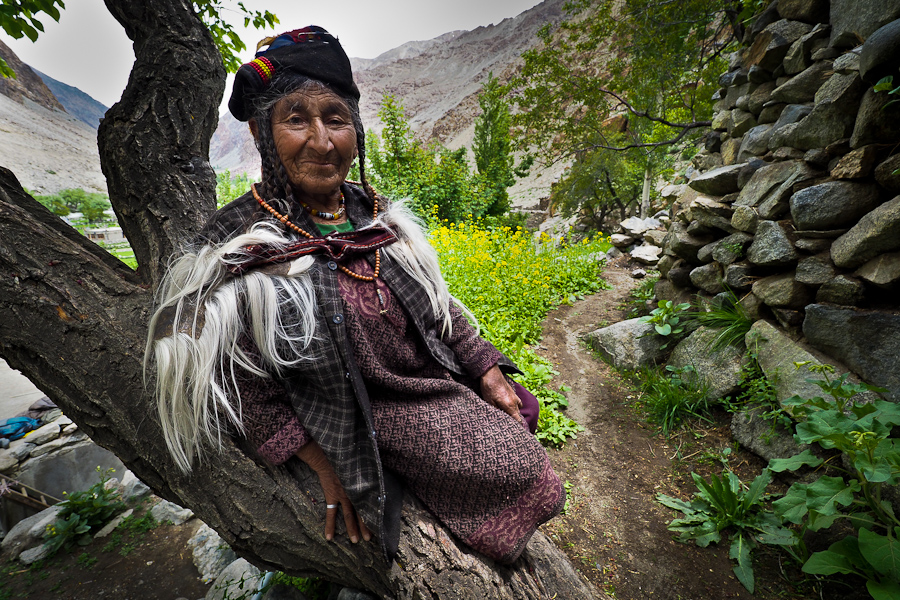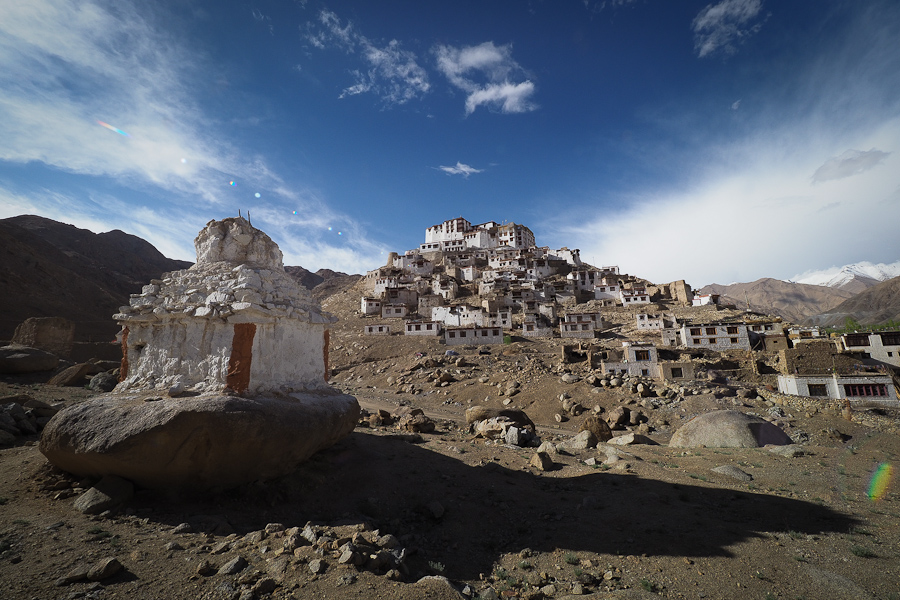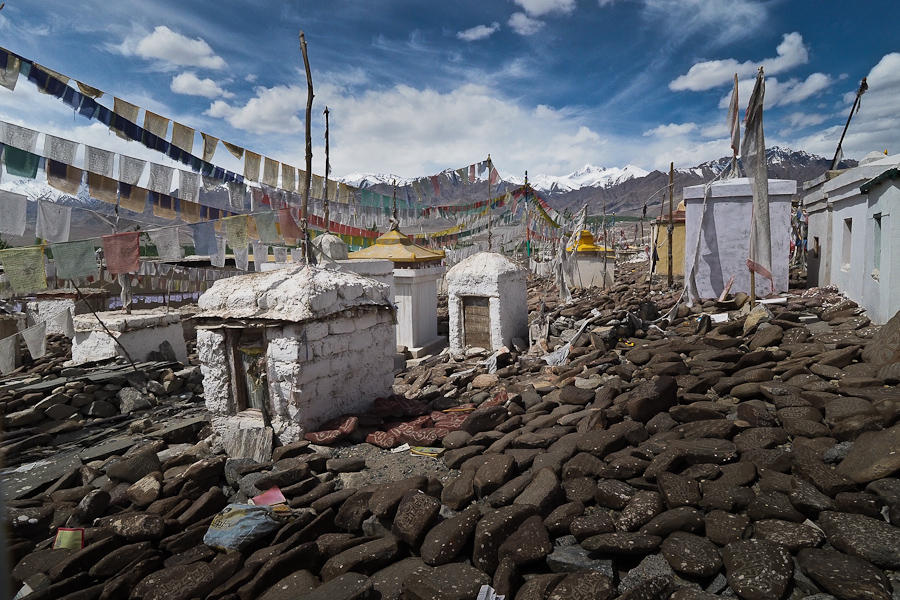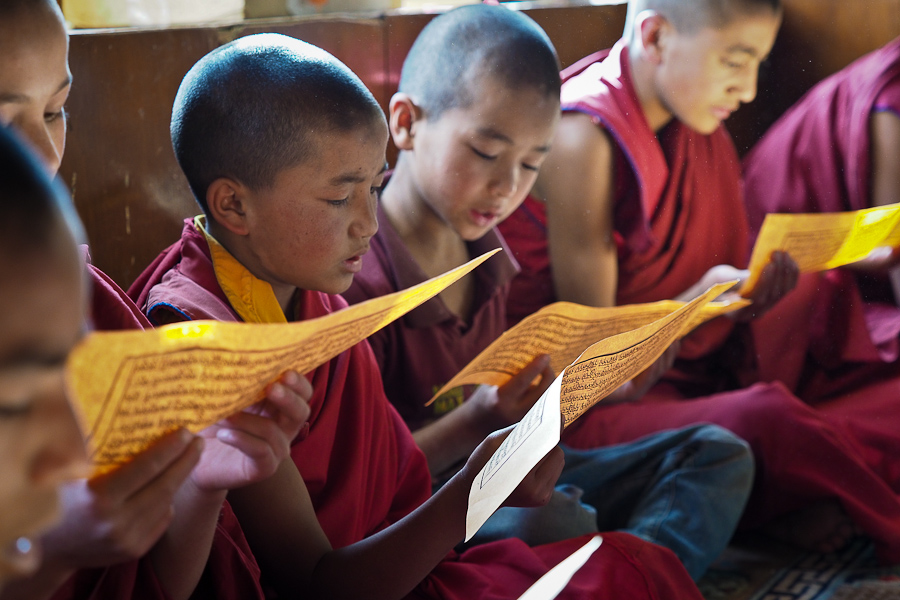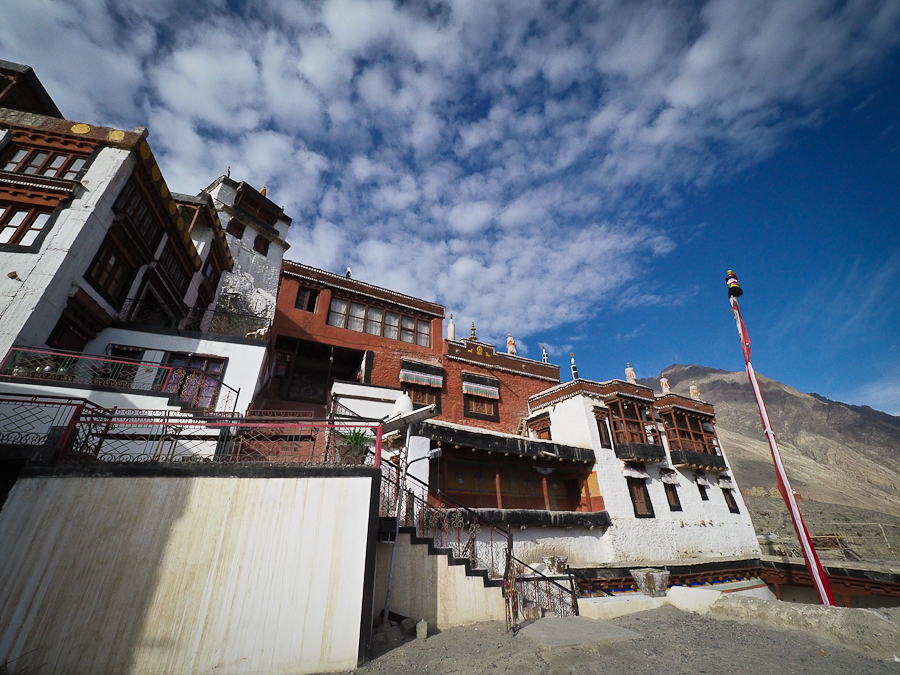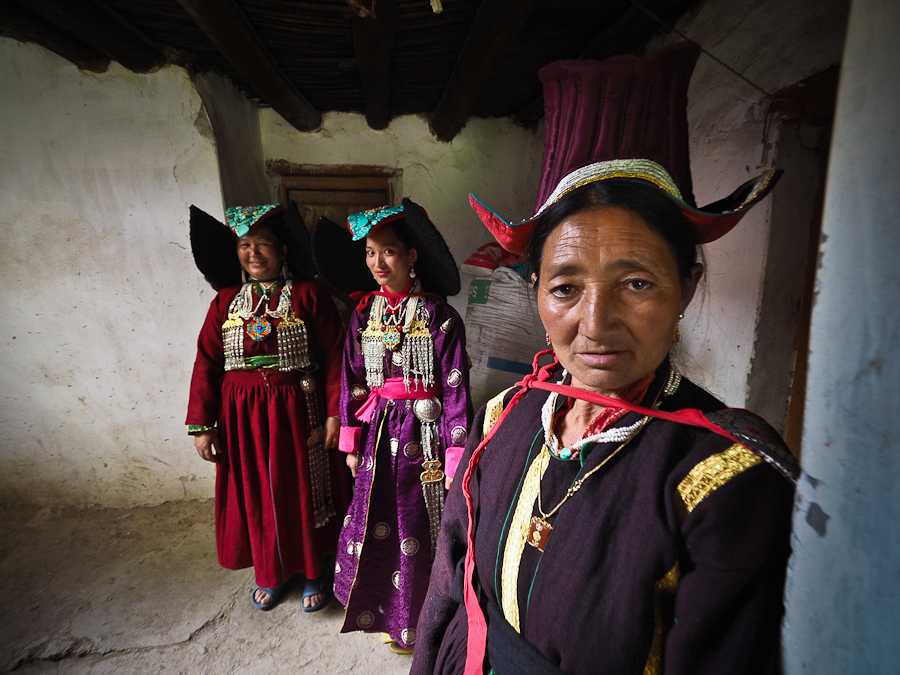Overview
“If there is heaven on earth, it is here, it is here, it is here!”. These were the words of the besotted Mughal emperor Jehangir 400 years ago and they sound true even today. A fertile, verdant region enclosed by snow-capped mountains, Kashmir valley’s beauty has been praised for centuries. Ladakh’s mesmerizing beauty, amazing history, and fascinating heritage make it a popular and much-loved travel destination in India and one sure to take your breath away!
Ladakh has often been called Little Tibet because of its historical connection with Lhasa and its predominantly Tibetan Buddhist culture. Its awe-inspiring landscape has been modified and sculpted into its spectacular shape by wind and water over the millennia. The moon-like scenery is extraordinary: stark and barren but interspersed with isolated settlements of green oases full of swaying poplar trees, apricot orchards, and cultivated farmland.
Despite the rugged terrain and high altitude, the people of Ladakh exhibit a natural exhilaration and their customs and lifestyle are a continuum from the past; these friendly and gentle people. We hope you will join us on this photo tour that shall prove to be fascinating and memorable!
Itinerary
*subject to change*
Day 1 (June 13): Leh – Gateway to Ladakh
Leh, the entry point to Ladakh, greets you with thin mountain air and the promise of captivating cultural encounters. You will be greeted by our local expert and transferred to your hotel. You will take note of the distinct Ladakhi architecture, characterized by mud-brick structures adorned with colourful prayer flags fluttering in the breeze. The Ladakh region, often referred to as “Little Tibet,” is a treasure trove for photographers seeking authenticity and spirituality. Engage with the team as you acclimate to altitude, learning about the itinerary and photographic strategies to make the most of this journey. Orientation at the hotel sets the stage for the days ahead, immersing participants in the cultural nuances that make Ladakh a photographer’s paradise. Welcoming drinks and Dinner at hotel. Overnight in Leh.
Day 2 (June 14): Thiksey Monastery – Spiritual Sunrise and Village Life
At the crack of dawn, short drive to Thiksey Monastery, perched dramatically against the Ladakhi landscape. The morning prayer ritual, accompanied by the rhythmic chants of monks, offers an unparalleled opportunity to capture the spiritual essence of Ladakh. The sun rising over the Himalayan peaks paints the monastery in hues of gold. Back at the hotel, the traditional Ladakhi breakfast introduces participants to the local flavours. As head out to visit the grand Buddha statue and drive to a nearby village, immerse yourself in Ladakh’s culture. Cafe Cloud becomes a rendezvous for cultural exchange (and lunch), a place where photographers can capture the genuine warmth of Ladakhi hospitality and the authentic flavours of the region. Breakfast and dinner at hotel. Overnight in Leh.
Day 3 (June 15): Namgyal Tsemo Temple – Old Leh’s Living History
Embark on a journey through the narrow alleyways of Old Leh, where the ancient Namgyal Tsemo Temple stands as a silent witness to the city’s storied past. The fort and bazaar come alive with vibrant colours, as local bread makers and shopkeepers engage in their daily activities. Ladakh’s traditional architecture, characterized by intricately carved wooden windows and doors, provides a visual feast for photographers seeking to capture the essence of a bygone era. Lunch at a local restaurant immerses participants in Ladakh’s culinary heritage, with flavours influenced by both Central Asian and Tibetan cuisines. The artisan craft village showcases the skilled hands of Ladakhi craftsmen, weaving stories into every creation. Back at the hotel, a photo lecture and review offer a moment of reflection amidst the bustling cultural journey. Breakfast and dinner in Hotel. Overnight in Leh.
Day 4 (June 16): Drive on the Rooftop of the World
Embark on a breathtaking journey over one of the world’s highest roads, where every twist and turn reveals Ladakh’s unparalleled landscapes. As you stop briefly at the summit for photos, the vastness of the landscape unfolds before you, a canvas of rugged mountains and pristine valleys. Upon reaching your hotel and after a brief rest and tea, prepare for a short drive to the Hundar sand dunes, where the sight of Bactrian camels against the setting sun transforms the terrain into a photographer’s dreamscape. The shifting hues of the desert sky provide a spectacular backdrop for capturing the unique blend of Ladakhi culture and nature. Dinner and breakfast in the comfort of your hotel in Hundar. Overnight in Nubra Valley.
Day 5 (June 17): Diskit to Sumar – Monastic Serenity and Hidden Havens
Dawn breaks over Diskit monastery as you immerse yourself in the morning prayers of the monks, their chants echoing through the ancient monastery. After breakfast, set out for Samtan Ling Monastery, perched amidst serene landscapes, where you capture the quiet moments of monastic life. Tea with the monks offers a glimpse into their spiritual world. Drive to Insa Monastery and embark on a short hike to a hidden lake, surrounded by nature’s tranquillity. Pause for a picnic, a moment of communion with Ladakh’s untamed beauty. Return to Diskit for an overnight stay, experiencing the cultural interplay between tradition and nature. Breakfast, packed lunch, Dinner. Overnight in Nubra Valley.
Day 6 (June 18): Diskit to Leh – Morning Prayers
Rise early for morning prayers at Diskit Monastery, capturing the chants in their rhythmic devotion against the backdrop of the rising sun. After a late breakfast and checkout, the homeward journey to Leh begins. The drive back offers an opportunity for contemplation. Dinner awaits at your hotel in Leh, marking the end of your sojourn into Ladakh’s heart. Breakfast, Packed Lunch, Dinner. Overnight in Leh.
Day 7 (June 19): Leh – Immersed in Tibetan Heritage (Tibetan Refugee settlement)
Venture into the heart of Ladakh’s cultural diversity with a visit to the Tibetan Refugee Settlement in Leh. Begin your day with breakfast and set out to capture the intricate artistry of a genuine Tibetan stone carver, a craftsman preserving the essence of Tibetan culture. As you join the circumambulation of Tibetan refugees at prayer wheels, the spins echoing the resilience of a displaced community. Engage with the bread makers, capturing a unique blend of tradition and adaptation. The vibrant market becomes a canvas for shooting daily life, each frame telling a story of survival and perseverance. Lunch at our local expert Stobgais’s home immerses you further in Tibetan hospitality, setting the stage for an afternoon at a nomadic textile studio. Here, the delicate art of weaving and spinning unfolds before your lens, with local nomadic women presenting the luxurious tale of cashmere. The day culminates in a lecture by the owner, unravelling the intricate threads of Pashmina wool. Breakfast and dinner at the hotel. Overnight in Leh.
Day 8 (June 20): Leh to Nomad Village – And back to Leh
Rise at 5:00 am for a drive to a nomad sheep village, where simplicity and resilience characterize the lives of 16 nomadic families. Capture the morning light illuminating their tents and the vast landscapes that surround them. Enjoy a boxed breakfast or snacks and tea at a local shop, a chance to savor the flavours of nomadic life. Engage in more intimate visits with nomadic families, witnessing their stories in the folds of their tents. As you drive back to Leh, the stark beauty of the Gya village unfolds, offering lunch in a heritage home. The evening is yours to explore the vibrant Leh market, capturing the essence of Ladakh’s fusion of tradition and modernity. Packed breakfast, lunch at Gya village, and dinner on your own in Leh market..Overnight in Leh.
Day 9 (June 21): Leh to Ule – Basgo’s Legacy
Embark on a cultural expedition, beginning at Basgo Monastery and Palace, where the stones bear witness to centuries of Ladakh’s rich history. The drive to Alchi unveils ancient murals and sculptures, a testament to the artistic prowess of Ladakh’s medieval artisans. Lunch, then afternoon of exploration in Sgyera village, where homes adorned with turquoise head dresses create a striking visual narrative. Pur local experts’ lecture on Arian people adds depth to your understanding of Ladakh’s diverse ethnic tapestry. The evening unfolds at the round house of Ule Resort, where a viewpoint becomes the stage for image sharing, a photo lecture, and an optional hike down to the river. Overnight in Ule.
Day 10(June 22): Ule to Lamayuru – Monastic Mystical in Moonscape
Begin the day with a breakfast at Ule Resort, preparing a journey to Lamayuru Monastery, a spiritual haven perched atop towering cliffs surround by a lunar landscape. Your arrival coincides with the monastic festival, Youru KabGyad, a celebration of colour, tradition, and spiritual fervour. Capture the intricate dance performances, masked rituals, and vibrant costumes that characterize this Ladakhi spectacle. Return to the serenity of Ule Resort for a dinner. Let the music, dances, and energy of Lamayuru’s festivities echo in your dreams as you sleep in the tranquillity of Ule Resort. Overnight in Ule.
Day 11 (Jun 23): Ule to Lamayuru – Village Exploration and Moon Land Vistas
After breakfast, set forth to Wanla village, a hidden gem in Ladakh’s cultural tapestry. Visit the Monastery, with centuries-old murals, then return to Lamayuru for the ongoing festival, revisiting the mask’s outing and understanding the stories behind. Stroll through the village, immersing yourself in the daily lives of the locals, and then drive to the viewpoint overlooking Moon Land and the Monastery from a distant height. The unique terrain mimics the lunar surface, providing a surreal backdrop for your photographic exploration. Ascend to Foto La Pass for expansive landscapes that stretch into the horizon. Return to Ule Resort, dinner and overnight. Overnight in Ule.
Day 12 (Jun 24): Ule to Leh – Reflections and Farewells
Breakfast at Ule Resort. As you drive back to Leh, stop at a wool processing facility, where the journey from fleece to fabric reveals Ladakh’s textile handicrafts. Visit the best shop for Pashmina items manufactured by local organizations, providing a final opportunity to capture the exquisite craftsmanship of Ladakhi artisans. The day concludes with an optional photo review, a chance to revisit the visual narrative of your Ladakh journey. The farewell dinner marks the end of our cultural exploration. Overnight in Leh.
Day 13 (Jun 25): Leh to Delhi – Homeward Bound
After breakfast, bid farewell as you transfer to the airport for your journey to Delhi and beyond. (GUESTS TO MAKE OWN ARRANGEMENTS FOR FLIGHT TO DELHI.)

